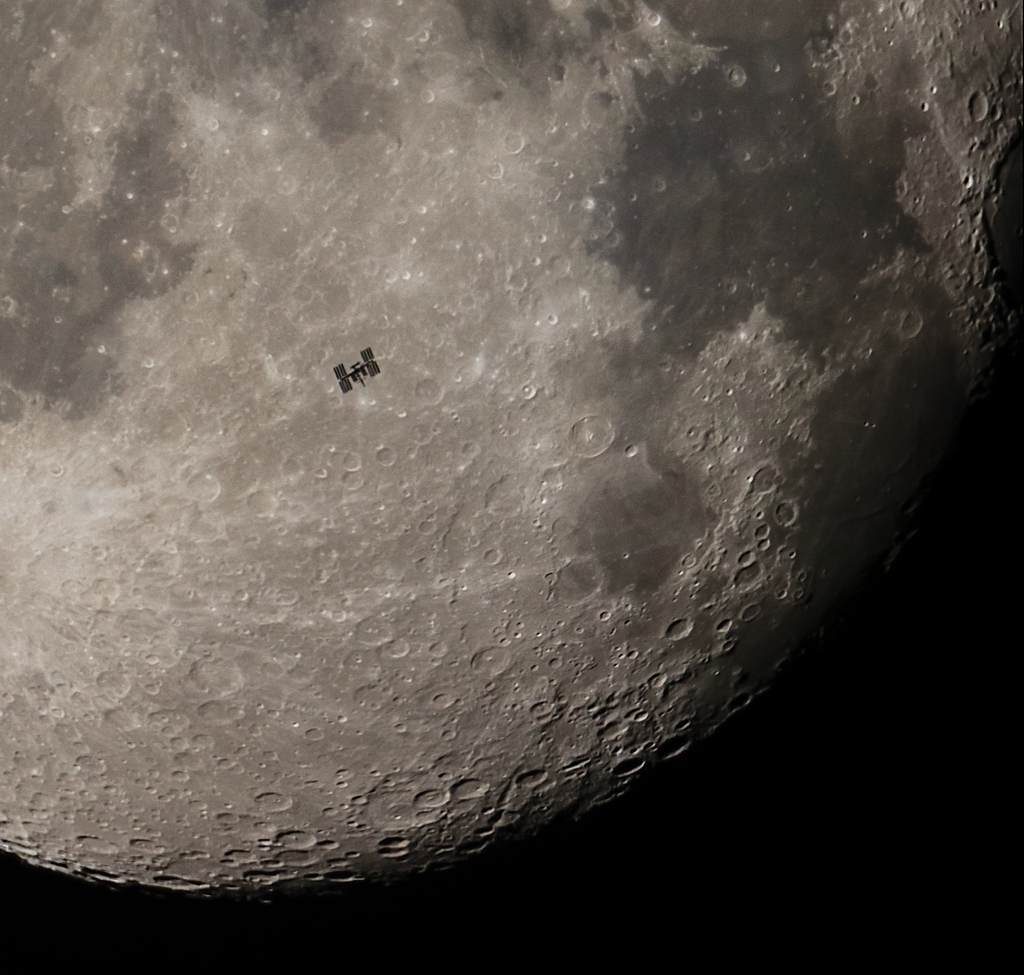2020年11月6日
Moon over ISS
Image Credit & Copyright: Derek Demeter (Emil Buehler Planetarium)
Explanation: Completing one orbit of our fair planet in 90 minutes the International Space Station can easily be spotted by eye as a very bright star moving through the night sky. Have you seen it? The next time you do, you will have recognized the location of over 20 years of continuous human presence in space. In fact, the Expedition 1 crew to the ISS docked with the orbital outpost some 400 kilometers above the Earth on November 2, 2000. No telescope is required to spot the ISS flashing through the night. But this telescopic field of view does reveal remarkable details of the space station captured as it transited the waning gibbous moon on November 3, just one day after the space age milestone. The well-timed telescopic snapshot also contains the location of another inspirational human achievement. About 400,000 kilometers away, the Apollo 11 landing site on the dark, smooth lunar Sea of Tranquility is to the right of the ISS silhouette.
Tomorrow’s picture: light-weekend
月亮前方的国际太空站
影像提供与版权: Derek Demeter (Emil Buehler Planetarium)
说明: 在夜晚,用肉眼就可轻易认出以快速移动亮点之姿掠过天空,每90分钟绕行地球一圈的国际太空站。不过,你看过吗?下次看到的话,请记得它是20多年来一直有人类居住的太空站。而这个轨道前哨站的第一批住民,是在2000年11月2日那天抵达的第一探险队之成员。要观看国际太空站掠过夜空,其实不用动用望远镜。不过在摄于11月3日,太空站刚完成历史旅程碑后一天的这片望远镜视野里,凌越下弦月的国际太空站之结构格外清晰。这张计时精准的望远镜影像,同时也拍下另一个人类达成深具启发性成就的地点。在国际太空站右方,有远在400,000公里之外,阿波罗11号于黝黑平滑宁静海内的登月点。
明日的图片: light-weekend







